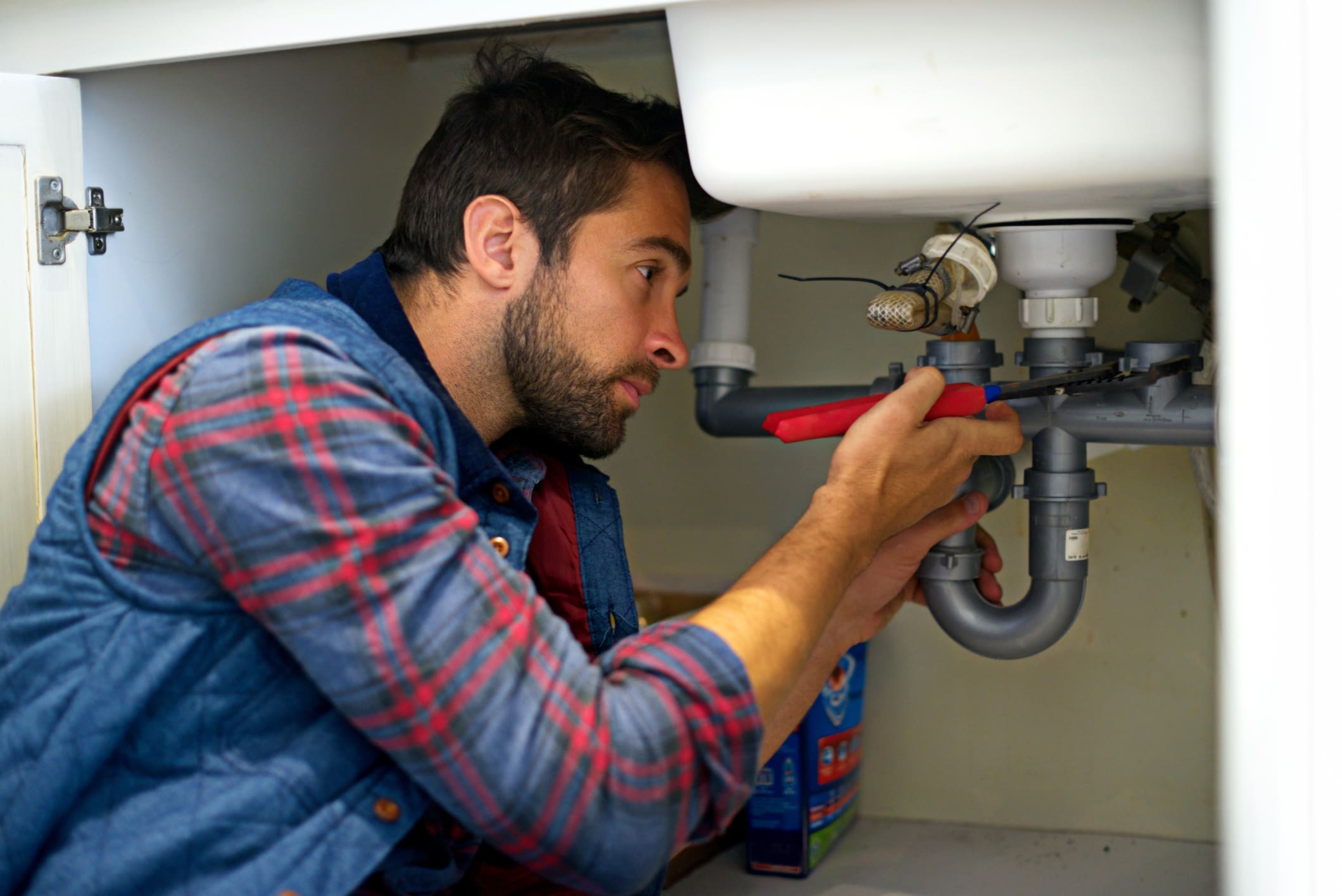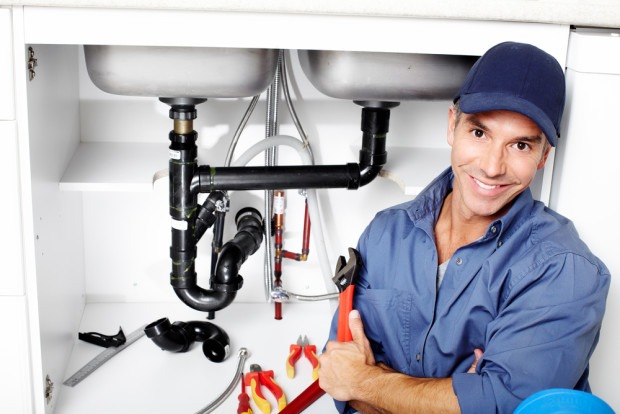The Complete Plumbing Maintenance Guide for First-Time Homeowners
The Complete Plumbing Maintenance Guide for First-Time Homeowners
Blog Article
Common Plumbing Problems Every House Owner Need To Recognize
Homeowners commonly encounter a series of plumbing issues that can interrupt life. Usual troubles consist of dripping faucets, clogged drains, and running toilets. These issues normally originate from damaged components or debris accumulation. Furthermore, reduced water stress and ruptured pipes can signify deeper troubles. Recognizing these obstacles is crucial for efficient upkeep. There are other less obvious issues that can emerge, which require closer examination.
Leaking Faucets
Leaky faucets can be a frustrating nuisance for homeowners. These relentless trickles not just produce an aggravating sound however likewise bring about drainage and boosted energy expenses. A dripping faucet usually results from worn-out washers, O-rings, or seals, which deteriorate gradually as a result of routine use and exposure to water. In many cases, the tap's inner parts might be rusted or damaged, demanding a much more substantial repair work or replacement. Determining the source of the leak is important; property owners may need to take apart the tap to examine its parts very closely. Normal upkeep can assist protect against leakages, including cleansing aerators and checking for indications of wear. Resolving a leaky faucet promptly can save water and decrease costs, making it a workable yet crucial job for home owners to take on in keeping their pipes systems successfully. Appropriate focus to this common concern can lead to a much more comfy living environment.
Obstructed Drains
Numerous house owners experience the aggravation of clogged up drains pipes at some time. This common plumbing concern can develop from various reasons, including the buildup of hair, soap residue, food bits, and oil. These products can produce clogs that hinder the circulation of water, causing reduce water drainage or full stoppage.In kitchens, grease and food scraps are typically the perpetrators, while washrooms frequently experience hair and soap build-up. Normal upkeep, such as utilizing drainpipe filters and avoiding putting fats down the sink, can aid stop clogs.When an obstruction does take place, homeowners might attempt to use a bettor or a commercial drainpipe cleaner as initial remedies. However, relentless issues might require specialist help to avoid damages to pipes - Plumber Mississauga. Understanding the reasons and prevention methods for clogged up drains can conserve property owners money and time, guaranteeing a smoother plumbing experience

Running Commodes
Running bathrooms are an usual concern that can come from different causes, including faulty flappers and chain problems. The continuous running not just drainages however likewise leads to increased energy expenses. Addressing these problems immediately can bring back and avoid more issues effectiveness to the plumbing system.
Reasons of Running Bathrooms
A relentless flow of water from a commode can be both wasteful and irritating, frequently indicating underlying issues within the pipes system. One common cause is a worn flapper valve, which may not develop a proper seal, permitting water to continually leakage into the bowl. In addition, a malfunctioning fill valve can cause excessive water flow, adding to the issue. Misaligned float mechanisms may additionally trigger the bathroom to run as they stop working to manage the water level appropriately. One more potential problem is mineral build-up, which can obstruct elements and hinder their performance. Determining these reasons quickly can aid property owners address the trouble prior to it rises, ensuring reliable operation of their pipes system.
Consequences of Continuous Operating
Although typically neglected, the consequences of a continually running toilet can considerably influence both water use and family costs. A running commode can squander a standard of 200 gallons of water daily, resulting in enhanced water expenses and unnecessary source intake. This excessive water usage not only stresses the household budget but additionally adds to ecological worries, especially in areas encountering water scarcities. Furthermore, the continuous noise of running water can be a source of annoyance, interfering with the serenity of the home - Plumbing. Additionally, prolonged problems might lead to more substantial pipes problems if left unaddressed, leading to more financial problems. House owners should recognize the significance of prompt repair services to minimize these adverse impacts and preserve a reliable plumbing system
Taking Care Of Running Commode Issues
Bathrooms that constantly run can be a frustrating problem for home owners, however recognizing the reason is the primary step towards an effective repair. Typical causes include a damaged flapper, which might not develop an appropriate seal, permitting water to leave into the dish. Homeowners should evaluate the flapper for wear and change it if required. Additionally, the fill shutoff can be malfunctioning, creating excess water to stream continuously. Adjusting or changing this part may fix the problem. my response One more prospective offender is a misaligned float, which can be gotten used to the proper height. Normal upkeep and timely repair work can prevent running toilets, ensuring both water conservation and cost savings on energy expenses.
Low Tide Stress
Low tide pressure can be a discouraging experience for home owners, usually materializing as a weak stream from showerheads and faucets. This issue can originate from various causes, including debris accumulation in pipelines, corroded plumbing, or problems with the municipal water system. Home owners may initially see low tide pressure in particular areas of the home, but it can rise to a much more widespread problem if not attended to promptly.In some cases, malfunctioning pressure regulatory authorities can likewise be responsible for poor water flow. Regular upkeep, such as purging the water heating system and examining for blockages, can aid reduce these issues. If reduced water pressure lingers, it might be needed to consult a specialist plumbing professional to identify and deal with the underlying reason. Recognizing the resource of low water stress is essential for restoring correct water circulation and making sure a practical pipes system.
Burst Pipes
Ruptured pipelines can be a significant pipes problem, commonly arising from the exact same aspects that contribute to reduced water stress, such as temperature level variations and aging infrastructure. When water ices up within pipes, it broadens, increasing stress until the pipe can no much longer contain it, causing a tear. Furthermore, corrosion from extended direct exposure to water can weaken pipelines, making them prone to breaking under normal pressure.Homeowners may notice indicators of a ruptured pipeline through sudden water leaks, wet places on walls or ceilings, and an unforeseen boost in their water costs. Immediate action is necessary; stopping working to address a burst pipeline can cause comprehensive water damage, mold and mildew growth, and costly repair services. Routine evaluations and maintenance of pipes systems can assist prevent this concern. Protecting pipes in colder areas and replacing old piping can greatly lower the danger of burst pipes, guarding the home's pipes honesty.
Hot Water Heater Issues
Exactly how can house owners recognize hot water heater concerns prior to they rise? Normal assessment and upkeep can help detect possible problems early. Home owners must search for indications such as inconsistent water temperature, unusual noises, or a reduction in hot water supply. Leaks or pools around the device may suggest a breakdown that calls for immediate attention. The look of corrosion or debris accumulation can also signal the demand for maintenance.Additionally, homeowners should keep track of the age of their water heating unit; most devices have a lifespan of 8 to 12 years. If the heater is approaching this age and revealing indications of wear, it may be time to review substitute. Normal flushing of the storage tank can avoid sediment accumulation, prolonging the system's life. By staying attentive and dealing with issues immediately, property owners can avoid pricey repair services and ensure their water heating unit operates successfully for years to find.
Sewage System Line Issues
Many homeowners may experience sewage system line problems at some point, influencing their pipes system's general functionality. Common issues include obstructions, tree root intrusions, and pipe damage. Obstructions usually arise from the accumulation of grease, hair, and international things that obstruct the circulation of wastewater. Tree origins can penetrate sewer lines, creating splits and leakages. Additionally, aging pipelines may break or wear away, resulting in more issues (Plumber). Indications of sewage system line problem include slow drains, undesirable smells, and sewer back-ups, which can the original source pose health and wellness dangers. House owners ought to resolve these troubles without delay to avoid extensive damage and pricey repairs. Regular upkeep, such as set up assessments and cleansing, can assist stop substantial concerns. In extreme cases, professional intervention may be essential to fix or change broken sections of the drain line. Recognizing these possible issues can aid property owners take proactive measures to maintain their pipes systems successfully
Regularly Asked Concerns
Just How Can I Stop Plumbing Problems in My Home?
To avoid plumbing problems, regular upkeep is crucial. House owners must evaluate pipes for leakages, clean drains pipes, and monitor water pressure. Additionally, informing themselves about proper usage can significantly minimize the danger of future pipes problems.
When Should I Call a Plumber Rather Than Fixing It Myself?
Identifying when to call a plumbing usually depends on the intensity of the issue. Significant leaks, relentless obstructions, or unknown problems call for specialist support, guaranteeing safety and protecting against further damages rather than risking personal efforts at fixing.
What Are the Signs of Hidden Pipes Leaks?
Indications of surprise plumbing leakages include unusual water bills, wet places on ceilings or wall surfaces, mold and mildew growth, and a stuffy odor. These indicators frequently recommend underlying issues that require expert assessment and repair service for resolution.
Just how Frequently Should I Have My Pipes Checked?
Routine pipes examinations are suggested every one to 2 years. This regularity helps recognize prospective problems early, ensuring the system stays reliable and lowering the risk of costly fixings or unexpected emergencies in the future.
Are There Do It Yourself Solutions for Minor Plumbing Issues?

Report this page